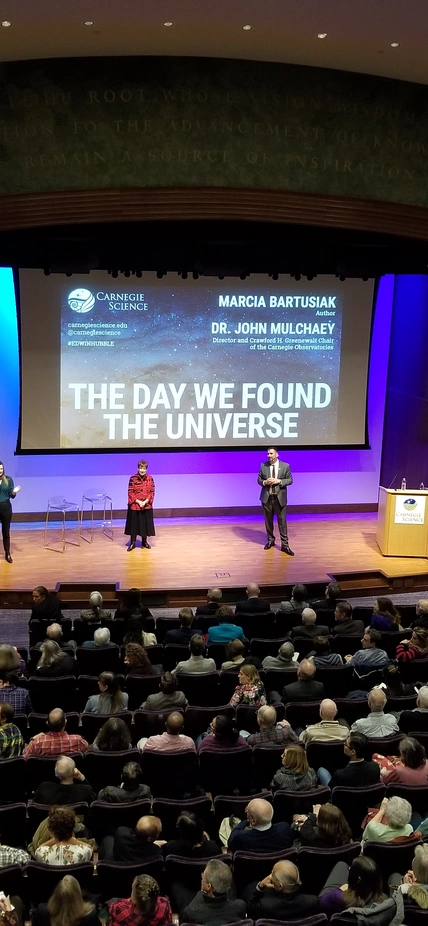Dear Friends,
As another year comes to an end, it's nice to reflect on all that we have accomplished during the past 12 months. In 2019, we witnessed the shredding of a star by a black hole and found another star that experienced a similar black-hole encounter with Sagittarius A* at the center of the Milky Way and is now being ejected from our galaxy. We found important clues in solving a decades-long mystery about one type of supernova explosion and explored why our Moon doesn't have a moon of its own. Meanwhile, new measurements of the expansion rate of the universe could be hinting at important, unknown physics. Closer to home, we've found more exoplanets around nearby stars including a few in the so-called habitable zone. Overall, 2019 has indeed been another great year of discovery for Carnegie Astronomy and Astrophysics.
This was also a year of several important landmarks for us. We celebrated the 50th anniversary of the founding of our Las Campanas Observatory (LCO) in Chile. Las Campanas is home to four major telescopes—the Swope and du Pont telescopes that have been operational since the 1970s and the twin Magellan 6.5-meter telescopes that came online earlier this century. These telescopes allowed the first light detected from a gravitational wave event, the first detection of a protoplanetary disk around a forming star, and the discovery of the most-distant black hole ever found.
Las Campanas is a critical part of our work at Carnegie. To keep this observatory at the forefront of research, we are continually pursuing the development of new instruments and telescopes. Next year will see the start of an ambitious new project on the du Pont telescope, the Sloan Digital Sky Survey V. Led by our own Juna Kollmeier, this survey will provide an unprecedented view of our Milky Way, other nearby galaxies, and hundreds of thousands of supermassive blackholes. Later in the decade, Las Campanas will be the home of the next-generation Giant Magellan Telescope. When it comes online, the GMT will enable detailed studies of the early universe and allow us to probe the compositions of atmospheres around exoplanets. It may even detect life elsewhere in the universe!
This year also marked the 100-year anniversary of the arrival of Edwin Hubble in Pasadena. Hubble came to Carnegie fresh out of graduate school at the University of Chicago. In his first decade here, he would make two of the most-important astronomy discoveries of the last century—confirming the existence of external galaxies beyond our own Milky Way and demonstrating the expansion of the universe. It's fair to say that Hubble's work helped launched the modern field of astrophysics.
Young scientists continue to play an important role here at Carnegie. As I've noted many times, our postdoctoral fellowship program is one of the finest in all of astronomy. Many of the scientific highlights from this year were led by our postdoctoral fellows. One of my biggest accomplishments as director has been the growth of our postdoctoral program. In addition to our historic strength in observational astronomy, we now have postdocs whose primary interests are in theoretical astrophysics or instrumentation. (Rosalie McGurk, one of our fellows in instrumentation is featured in this edition of the Newsletter.)
As of this fall, there are nearly two-dozen astronomy postdocs at Carnegie—the most we’ve ever had in our 115-year history! Carnegie is a very special place to be a postdoc. Our fellows are given access to our facilities at Las Campanas and the freedom to pursue scientific questions of their own choosing. It is not surprising that the majority go on to secure permanent positions at universities or research centers. In this way, Carnegie plays an important role in training the next generation of leaders in the field.
Finally, I'd like to take this opportunity to thank many of you who have helped contribute to our success at Carnegie. Although our endowment provides the bulk of our funding, philanthropic support allows us to extend our scientific reach. With your support we've been able to extend our postdoctoral program, build new instruments for our telescopes and support outreach efforts in the local community. For this, we are all truly grateful.
I look forward to sharing more discoveries about our universe with you in the years to come.
Dr. John Mulchaey
Crawford H. Greenewalt Chair and Director of the Division of Astronomy and Astrophysics
